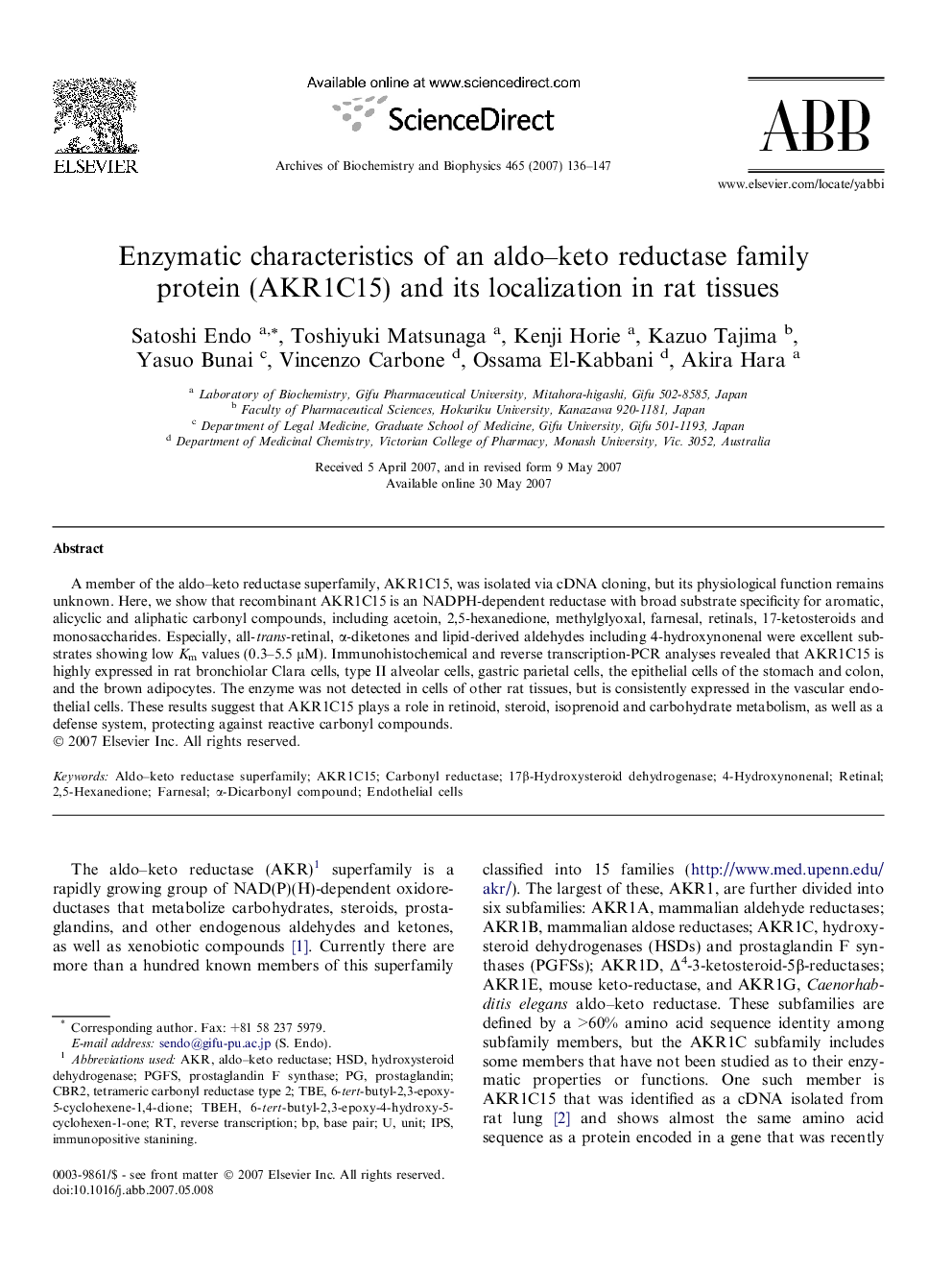| Article ID | Journal | Published Year | Pages | File Type |
|---|---|---|---|---|
| 1927049 | Archives of Biochemistry and Biophysics | 2007 | 12 Pages |
A member of the aldo–keto reductase superfamily, AKR1C15, was isolated via cDNA cloning, but its physiological function remains unknown. Here, we show that recombinant AKR1C15 is an NADPH-dependent reductase with broad substrate specificity for aromatic, alicyclic and aliphatic carbonyl compounds, including acetoin, 2,5-hexanedione, methylglyoxal, farnesal, retinals, 17-ketosteroids and monosaccharides. Especially, all-trans-retinal, α-diketones and lipid-derived aldehydes including 4-hydroxynonenal were excellent substrates showing low Km values (0.3–5.5 μM). Immunohistochemical and reverse transcription-PCR analyses revealed that AKR1C15 is highly expressed in rat bronchiolar Clara cells, type II alveolar cells, gastric parietal cells, the epithelial cells of the stomach and colon, and the brown adipocytes. The enzyme was not detected in cells of other rat tissues, but is consistently expressed in the vascular endothelial cells. These results suggest that AKR1C15 plays a role in retinoid, steroid, isoprenoid and carbohydrate metabolism, as well as a defense system, protecting against reactive carbonyl compounds.
